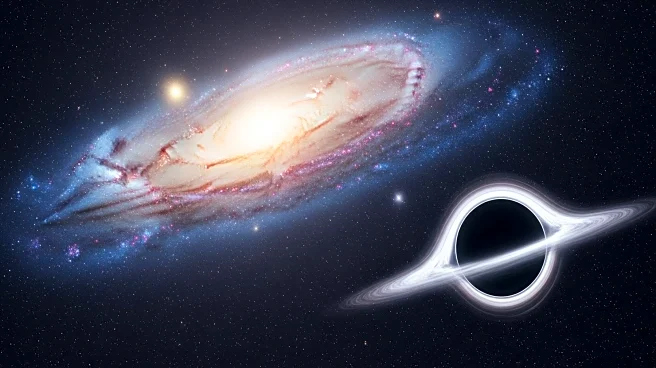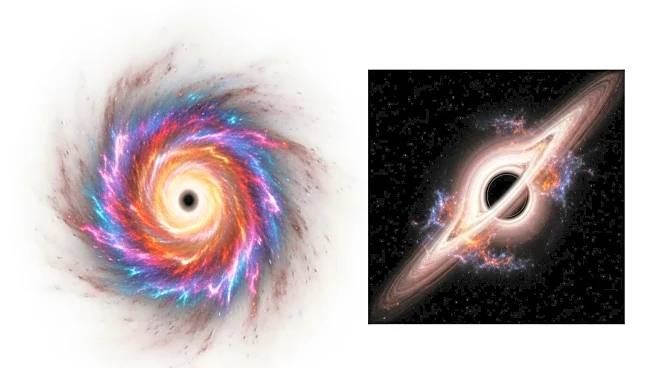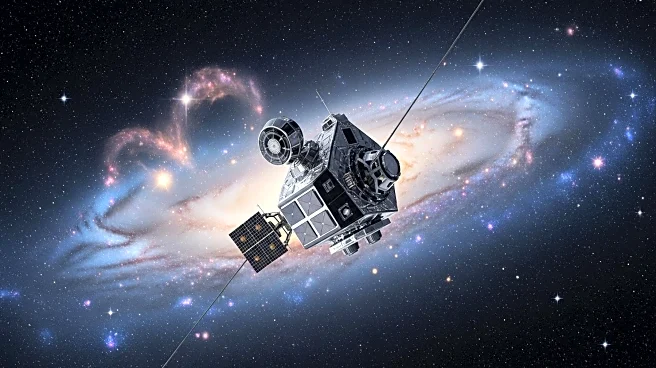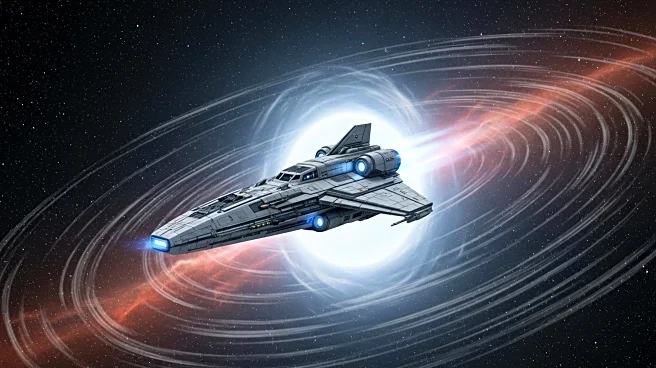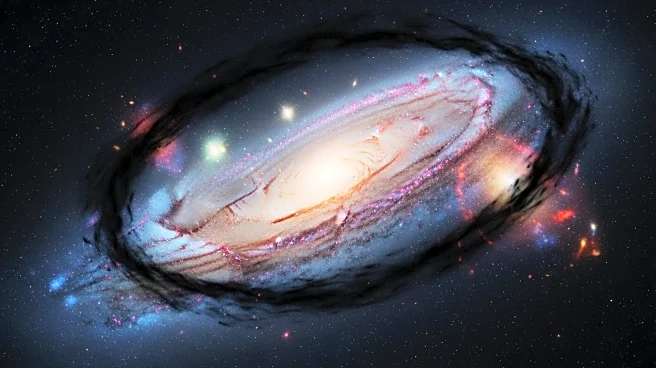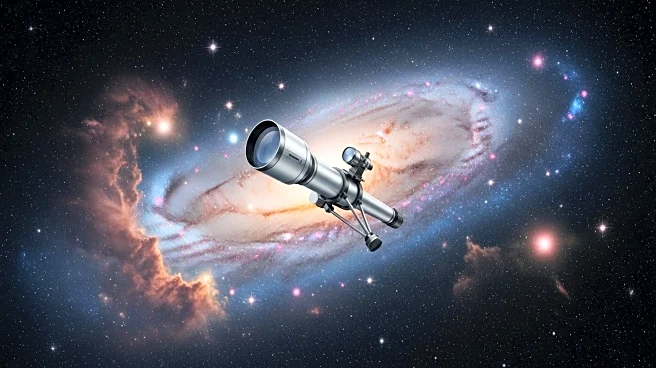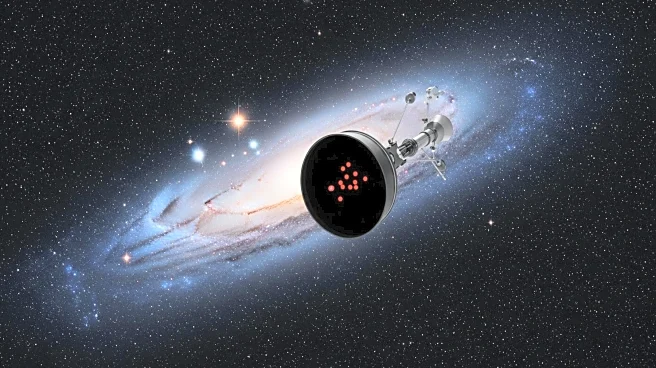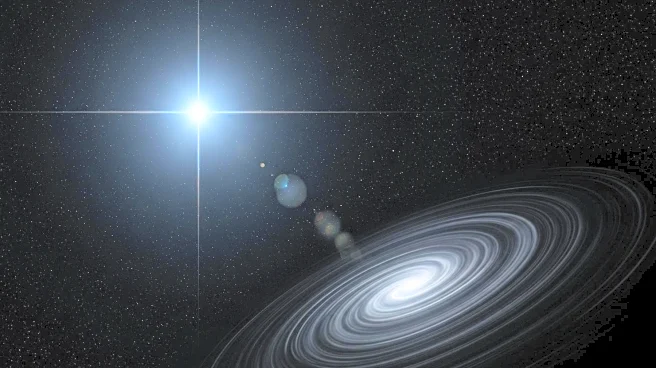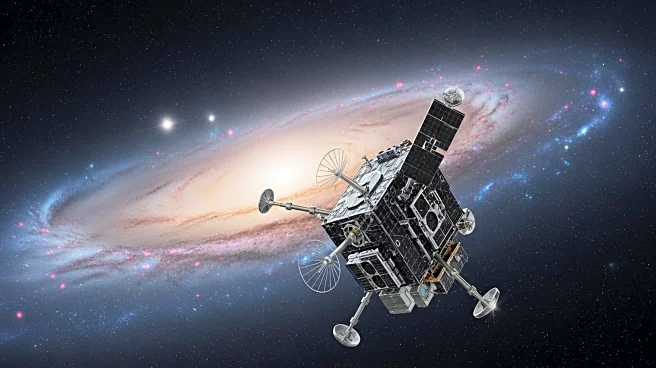What's Happening?
NASA's Chandra X-ray Observatory has identified a black hole growing at an unprecedented rate, exceeding the Eddington Limit. Located 12.8 billion light-years away, this black hole is part of a quasar, RACS J0320-35, and is producing more X-rays than any other black hole observed in the early universe. The discovery provides insights into how black holes can achieve massive sizes shortly after the Big Bang. The black hole's rapid growth challenges existing theories and suggests alternative formation processes.
Why It's Important?
Understanding black hole growth is essential for explaining the evolution of galaxies and cosmic structures. This discovery could reshape theories about black hole formation, particularly in the universe's early stages. The findings may help scientists develop new models for black hole birth and growth, contributing to broader astrophysical knowledge. Additionally, the presence of jets in this quasar could offer clues about the relationship between black hole growth rates and jet formation, enhancing our understanding of high-energy cosmic phenomena.
What's Next?
Researchers will continue to analyze data from Chandra and other telescopes to refine models of black hole growth. The study's results may lead to new hypotheses about the conditions necessary for rapid black hole expansion. As scientists explore the implications of this discovery, they may uncover additional insights into the universe's first generation of black holes. Future observations could further illuminate the processes driving black hole growth and their impact on cosmic evolution.

